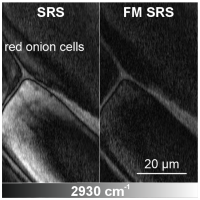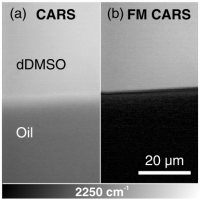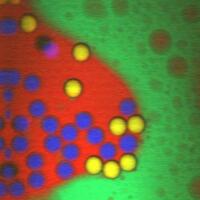Nonlinear Microscopy
In coherent Raman scattering, vibration levels of certain molecules are excited by several pulses of appropriately selected wavelengths. These vibrational levels are specific to the respective molecule, which means that samples can be examined for their chemical composition in a marker-free and non-invasive manner. This makes Raman microscopy a popular method in a wide variety of fields such as biology, medicine and pharmacy. However, in order to excite the vibrational levels, the excitation pulses must fulfill certain requirements, such as synchronized repetition rates and a broad and tunable wavelength range. This, in turn, places specific requirements on a light source that is to be used for Raman microscopy. Furthermore, in addition to the desired coherent Raman processes, parasitic processes often occur that lead to a background signal without chemical information. Mechanisms are therefore needed to suppress these background signals and thus make the resulting microscopy images more meaningful. Another challenge, especially for the detection of structures in the sample, is the low-noise detection of the signal, for which optimized detectors are used.






















